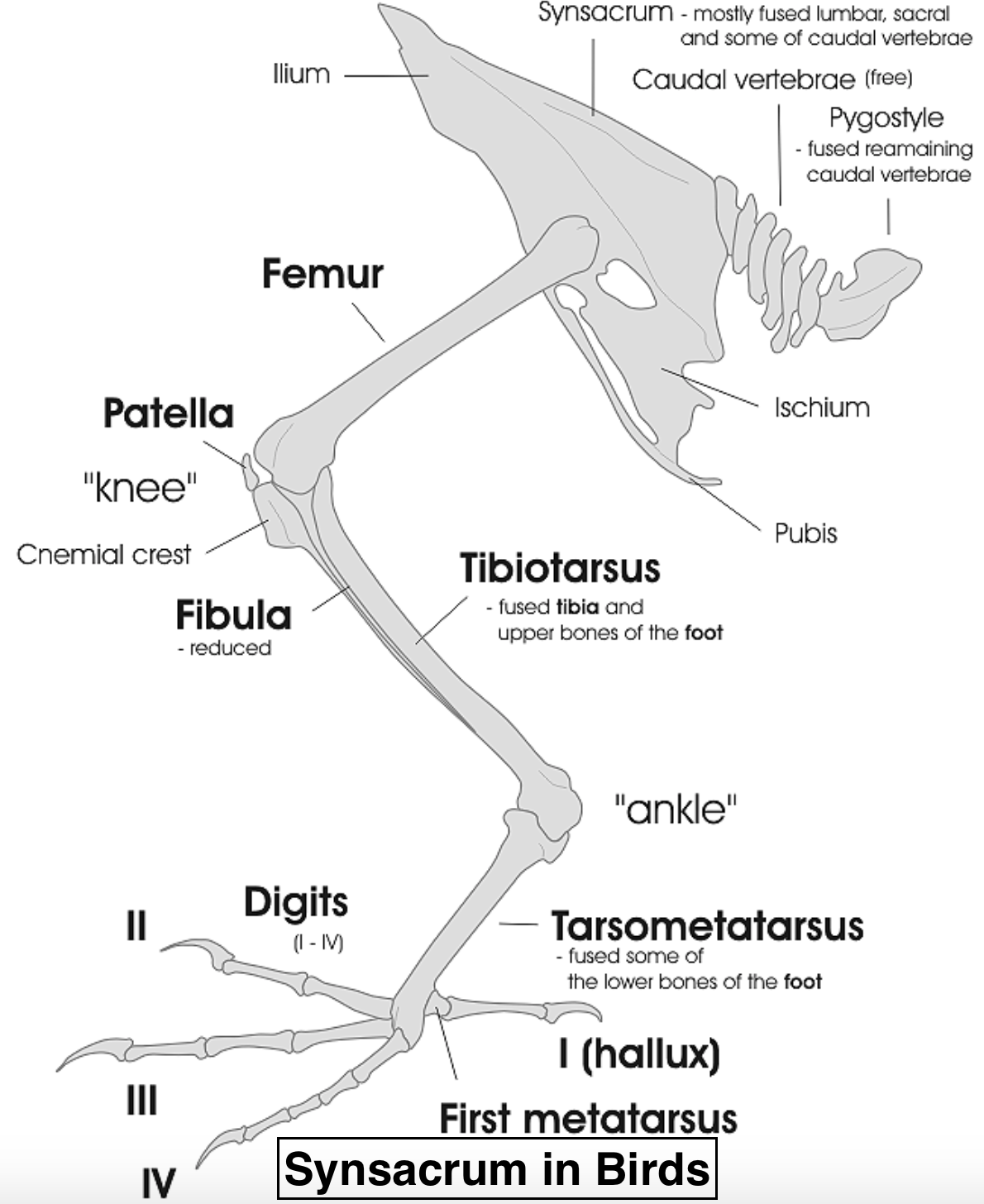
In birds, 6-10 caudal vertebrae are usually fused to form
(A) Sesamoid bone
(B) Odontoid process
(C) Plow-share bone
(D) Synsacrum
Answer
470.4k+ views
Hint: It is a skeletal structure of birds and dinosaurs. This structures a more broad rigid structure than the pelvis of a vertebrate, satisfying necessity for flight, locomotion, and respiration. For accommodating the glycogen body, the central section of this skeletal structure is swollen and an organ whose function is as yet unclear but which may be associated with balance.
Complete step by step answer:
The birds have a pair of kidneys recessed into renal fossa, hard sorrows in the fused vertebrae of the synsacrum. They stretch out from the posterior edges of the lungs to the furthest limit of the synsacrum. The urinary bladder is missing in all birds. The body of the bird is adjusted for flight. One of the important adaptations for this is the fusing of bones into single ossification. The compound structure present in the bird’s vertebral column is called the synsacrum and it is formed by the fusion of 14 to 16 vertebrae.

So, the correct answer is ‘ Synsacrum’.
Additional information: The association between the synsacrum and the ilium bone, which ventures far into the thoracic area, is highly significant for the shape of the trunk in the birds. With the help of spines the bony connection is achieved cranially and transverse processes and caudally by the transverse process of the synsacrum, which is fused into a continuous bony plate that allows the passage of nerves and blood vessels. Going from cranial to caudal the accompanying vertebrae in the synsacrum are separated: synsacrum thoracic, synsacrolumbar, primary sacral, and syn sacrocaudal.
Note: Acute or chronic trauma that affects the synsacrum/caudal segments can lead to urinary, intestinal, and/or cloacal autonomic dysfunction with coprostasis and marked intestinal/cloacal distension. Acute axonal injury with Wallerian degeneration is a typical result of nerve and spinal rope injury.
Complete step by step answer:
The birds have a pair of kidneys recessed into renal fossa, hard sorrows in the fused vertebrae of the synsacrum. They stretch out from the posterior edges of the lungs to the furthest limit of the synsacrum. The urinary bladder is missing in all birds. The body of the bird is adjusted for flight. One of the important adaptations for this is the fusing of bones into single ossification. The compound structure present in the bird’s vertebral column is called the synsacrum and it is formed by the fusion of 14 to 16 vertebrae.

So, the correct answer is ‘ Synsacrum’.
Additional information: The association between the synsacrum and the ilium bone, which ventures far into the thoracic area, is highly significant for the shape of the trunk in the birds. With the help of spines the bony connection is achieved cranially and transverse processes and caudally by the transverse process of the synsacrum, which is fused into a continuous bony plate that allows the passage of nerves and blood vessels. Going from cranial to caudal the accompanying vertebrae in the synsacrum are separated: synsacrum thoracic, synsacrolumbar, primary sacral, and syn sacrocaudal.
Note: Acute or chronic trauma that affects the synsacrum/caudal segments can lead to urinary, intestinal, and/or cloacal autonomic dysfunction with coprostasis and marked intestinal/cloacal distension. Acute axonal injury with Wallerian degeneration is a typical result of nerve and spinal rope injury.
Recently Updated Pages
Master Class 11 Accountancy: Engaging Questions & Answers for Success

Express the following as a fraction and simplify a class 7 maths CBSE

The length and width of a rectangle are in ratio of class 7 maths CBSE

The ratio of the income to the expenditure of a family class 7 maths CBSE

How do you write 025 million in scientific notatio class 7 maths CBSE

How do you convert 295 meters per second to kilometers class 7 maths CBSE

Trending doubts
10 examples of friction in our daily life

One Metric ton is equal to kg A 10000 B 1000 C 100 class 11 physics CBSE

Difference Between Prokaryotic Cells and Eukaryotic Cells

State and prove Bernoullis theorem class 11 physics CBSE

What organs are located on the left side of your body class 11 biology CBSE

Write down 5 differences between Ntype and Ptype s class 11 physics CBSE




